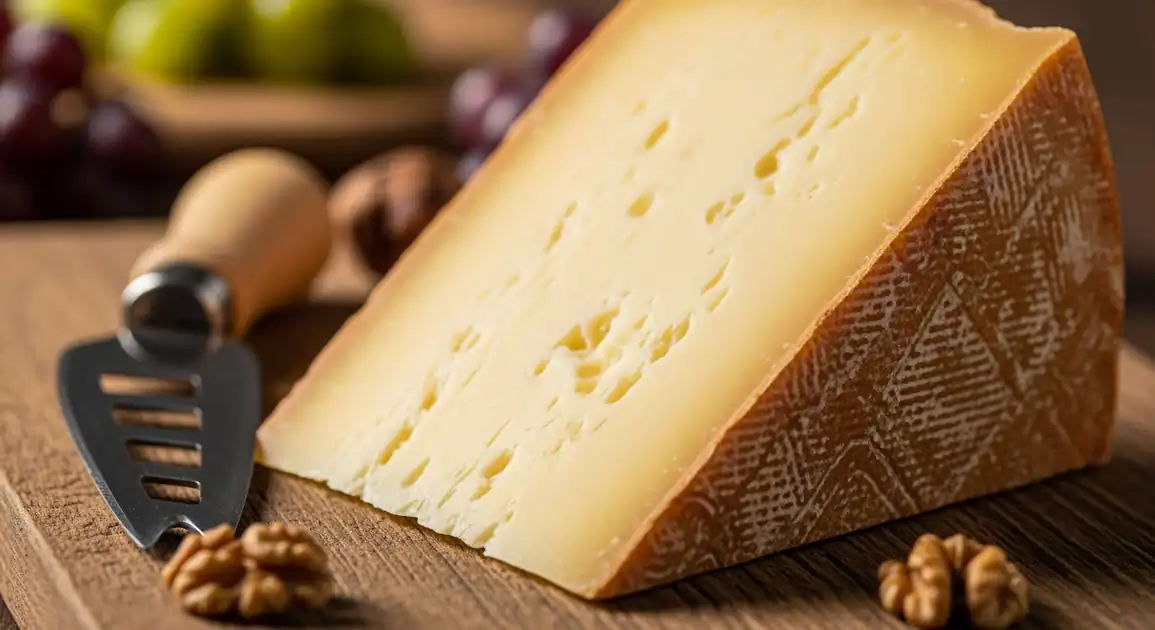Comté Cheese
Comté

Description
Paris boasts some of the finest fromageries in the world, offering an exceptional selection of Comté cheeses with various ages and from different affineurs. While not produced in Paris, the city is a prime destination to taste and purchase high-quality Comté curated by expert cheesemongers.
Dietary Information
Serving information
Serving style
Typically purchased by weight from a fromagerie. Consumed at room temperature, often with baguette, perhaps some fruit or nuts. Frequently included on cheese boards in restaurants.
Quick facts
Parisian Fromageries: Often Tues-Sat, ~10 AM - 1 PM / 3 PM - 7:30 PM. Some open Sunday mornings. Closed Mondays. Hours vary greatly.
Safety Tips
What to Look For
-
Reputable Fromagerie/Vendor
Choose specialized cheese shops or trusted market vendors known for quality and proper handling.
-
Cheese Well-Maintained
The cut surface should look fresh, not dried out, cracked, or sweaty. The rind should be clean and intact.
-
Proper Wrapping
Cheese should be wrapped in cheese paper or waxed paper by the vendor. Avoid tightly wrapped plastic for long storage.
-
Knowledgeable Staff ('Fromager'/'Affineur')
Staff should be able to tell you about the cheese's age, flavor profile, and origin.
What to avoid
-
Cheese looks dried out, cracked, or sweaty
Indicates improper storage or that the piece is old/stale.
-
Strong ammonia or sour smell
Indicates spoilage. Comté should smell nutty, fruity, or savory depending on age, but not unpleasant.
-
Visible mold on the cut surface (paste)
While the rind has natural molds, the interior paste should be free of unwanted mold.
-
Pre-cut cheese sitting out uncovered
Increases risk of drying out and potential contamination. Prefer cheese cut fresh or properly wrapped.
Price information
Price range
Budget tips
- Prices per kilo can be high in top Parisian fromageries. Buy smaller amounts (150-250g is typical).
- Market stalls (e.g., Marché Bastille, Marché des Enfants Rouges) might offer slightly better prices but potentially less curated selection.
- Supermarket Comté (e.g., Monoprix, Carrefour) is the most budget-friendly but usually younger ages.
Value indicators
- Cheese is sourced from reputable affineurs (e.g., Marcel Petite, Bernard Antony - high end).
- Shop has a wide range of 'affinages' (ages) available.
- Staff are knowledgeable and passionate about their products.
- Cheese is cut fresh from the wheel or large block for you.
Where to Find This Dish
Le Marais
Trendy district with several highly-regarded fromageries.
Place des Vosges, Rue de Bretagne (near Marché des Enfants Rouges)
Shop hours (check individual stores)
Saint-Germain-des-Prés
Upscale neighborhood known for gourmet food shops, including famous fromageries.
Boulevard Saint-Germain, Near Bon Marché department store
Shop hours
Latin Quarter
Home to traditional streets with food shops, including cheese specialists.
Rue Mouffetard
Shop hours, Market days
Market Streets
Streets known for food shops often have excellent fromageries.
Rue Montorgueil, Rue Cler, Rue des Martyrs
Shop hours
Vendor Tips
- Visit renowned fromageries like Laurent Dubois, Androuet, Quatrehomme, Barthélémy for exceptional quality and advice (expect higher prices).
- Don't be intimidated; Parisian fromagers are usually happy to guide you and offer tastes.
- Learn basic French cheese terms ('fruité', 'vieux', 'affinage') to help communicate preferences.
How to Order
Regional Variations
-
Affineur Focus
(Focus Affineur)
Top Parisian fromageries often build relationships with specific affineurs in the Jura, showcasing their unique selections and aging philosophies.
-
Wide Age Range
(Large Gamme d'Affinage)
Compared to smaller towns, Paris shops typically offer a broader spectrum of Comté ages, from young to exceptionally old (36+ months sometimes).
Cultural context
History
Comté boasts a long history, with origins dating back over a thousand years to when inhabitants of the Jura mountains needed to preserve milk through the long winters. Farmers pooled their milk in cooperative dairies called 'fruitières' to make large wheels capable of long aging – a tradition that continues today. Comté was one of the first cheeses granted AOC status in 1958, now recognized as AOP (Appellation d'Origine Protégée) across Europe.
Local significance
Comté is highly respected and widely consumed in Paris, seen as a benchmark of quality French cheese. Parisian fromageries play a key role in showcasing the best affineurs and aging profiles.
Eating customs
- Enjoyed simply with good bread.
- Part of the social ritual of sharing food and wine.